首页 > SCI期刊 > SCIE期刊 > 医学 > 中科院3区 > 期刊介绍
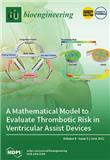
评价信息:
年发文量:0
《生物工程》(Bioengineering)是一本以Chemical Engineering-Bioengineering综合研究为特色的国际期刊。该刊由Multidisciplinary Digital Publishing Institute (MDPI)出版商创刊于2014年,刊期Monthly。该刊已被国际重要权威数据库SCIE收录。期刊聚焦Chemical Engineering-Bioengineering领域的重点研究和前沿进展,及时刊载和报道该领域的研究成果,致力于成为该领域同行进行快速学术交流的信息窗口与平台。该刊2023年影响因子为0。CiteScore指数值为4。
Aims
Bioengineering (ISSN 2306-5354) provides an advanced forum for the science and technology of bioengineering. It publishes original research papers, comprehensive reviews, communications and case reports. Our aim is to encourage scientists to publish their experimental and theoretical results in as much detail as possible. All aspects of bioengineering are welcomed from theoretical concepts to education and applications. There is no restriction on the length of the papers. The full experimental details must be provided so that the results can be reproduced. There are, in addition, four key features of this Journal:
● We are introducing a new concept in scientific and technical publications “The Translational Case Report in Bioengineering”. It is a descriptive explanatory analysis of a transformative or translational event. Understanding that the goal of bioengineering scholarship is to advance towards a transformative or clinical solution to an identified transformative/clinical need, the translational case report is used to explore causation in order to find underlying principles that may guide other similar transformative/translational undertakings.
● Manuscripts regarding research proposals and research ideas will be particularly welcomed.
● Electronic files and software regarding the full details of the calculation and experimental procedure, if unable to be published in a normal way, can be deposited as supplementary material.
● We also accept manuscripts communicating to a broader audience with regard to research projects financed with public funds.
Scope
● Bionics and biological cybernetics: implantology; bio–abio interfaces
● Bioelectronics: wearable electronics; implantable electronics; “more than Moore” electronics; bioelectronics devices
● Bioprocess and biosystems engineering and applications: bioprocess design; biocatalysis; bioseparation and bioreactors; bioinformatics; bioenergy; etc.
● Biomolecular, cellular and tissue engineering and applications: tissue engineering; chromosome engineering; embryo engineering; cellular, molecular and synthetic biology; metabolic engineering; bio-nanotechnology; micro/nano technologies; genetic engineering; transgenic technology
● Biomedical engineering and applications: biomechatronics; biomedical electronics; biomechanics; biomaterials; biomimetics; biomedical diagnostics; biomedical therapy; biomedical devices; sensors and circuits; biomedical imaging and medical information systems; implants and regenerative medicine; neurotechnology; clinical engineering; rehabilitation engineering
● Biochemical engineering and applications: metabolic pathway engineering; modeling and simulation
● Translational bioengineering
目标
《生物工程》(ISSN 2306-5354)为生物工程科学和技术提供了一个高级论坛。它发表原创研究论文、综合评论、通讯和案例报告。我们的目标是鼓励科学家尽可能详细地发表他们的实验和理论结果。从理论概念到教育和应用,生物工程的各个方面都受到欢迎。论文长度没有限制。必须提供完整的实验细节,以便可以重现结果。此外,本期刊还有四个主要特点:
● 我们在科学和技术出版物中引入了一个新概念“生物工程中的转化案例报告”。它是对转化或转化事件的描述性解释分析。生物工程学术研究的目标是针对已确定的转化/临床需求,向转化或临床解决方案迈进,转化病例报告用于探索因果关系,以找到可能指导其他类似转化/转化工作的基本原则。
● 特别欢迎有关研究提案和研究想法的手稿。
● 如果无法以正常方式发布,则可以将有关计算和实验过程全部细节的电子文件和软件作为补充材料存放。
● 我们还接受与公共资金资助的研究项目相关的面向更广泛受众的手稿。
范围
● 仿生学和生物控制论:种植学;生物-非生物界面
● 生物电子学:可穿戴电子学;植入式电子学;“超越摩尔”电子学;生物电子设备
● 生物过程和生物系统工程及应用:生物过程设计;生物催化;生物分离与生物反应器;生物信息学;生物能源等。
● 生物分子、细胞和组织工程及应用:组织工程;染色体工程;胚胎工程;细胞、分子与合成生物学;代谢工程;生物纳米技术;微纳米技术;基因工程;转基因技术
● 生物医学工程及应用:生物机电一体化;生物医学电子学;生物力学;生物材料;仿生学;生物医学诊断;生物医学治疗;生物医学设备;传感器与电路;生物医学成像与医学信息系统;植入物与再生医学;神经技术;临床工程;康复工程
● 生化工程及应用:代谢途径工程;建模与仿真
● 转化生物工程
《Bioengineering》(生物工程)编辑部通讯方式为MDPI, ST ALBAN-ANLAGE 66, BASEL, SWITZERLAND, CH-4052。如果您需要协助投稿或润稿服务,您可以咨询我们的客服老师。我们专注于期刊咨询服务十年,熟悉发表政策,可为您提供一对一投稿指导,避免您在投稿时频繁碰壁,节省您的宝贵时间,有效提升发表机率,确保SCI检索(检索不了全额退款)。我们视信誉为生命,多方面确保文章安全保密,在任何情况下都不会泄露您的个人信息或稿件内容。
2023年12月升级版
| 大类学科 | 分区 | 小类学科 | 分区 | Top期刊 | 综述期刊 |
| 医学 | 3区 | ENGINEERING, BIOMEDICAL 工程:生物医学 | 4区 | 否 | 否 |
2022年12月升级版
| 大类学科 | 分区 | 小类学科 | 分区 | Top期刊 | 综述期刊 |
| 工程技术 | 3区 | ENGINEERING, BIOMEDICAL 工程:生物医学 | 3区 | 否 | 否 |
基础版:即2019年12月17日,正式发布的《2019年中国科学院文献情报中心期刊分区表》;将JCR中所有期刊分为13个大类,期刊范围只有SCI期刊。
升级版:即2020年1月13日,正式发布的《2019年中国科学院文献情报中心期刊分区表升级版(试行)》,升级版采用了改进后的指标方法体系对基础版的延续和改进,影响因子不再是分区的唯一或者决定性因素,也没有了分区的IF阈值期刊由基础版的13个学科扩展至18个,科研评价将更加明确。期刊范围有SCI期刊、SSCI期刊。从2022年开始,分区表将只发布升级版结果,不再有基础版和升级版之分,基础版和升级版(试行)将过渡共存三年时间。
JCR分区等级:
| 按JIF指标学科分区 | 收录子集 | 分区 | 排名 | 百分位 |
| Gold OA文章占比 | 研究类文章占比 | 文章自引率 |
| 95.36% | 72.43% | |
| 开源占比 | 出版国人文章占比 | OA被引用占比 |
名词解释:JCR分区在学术期刊评价、科研成果展示、科研方向引导以及学术交流与合作等方面都具有重要的价值。通过对期刊影响因子的精确计算和细致划分,JCR分区能够清晰地反映出不同期刊在同一学科领域内的相对位置,从而帮助科研人员准确识别出高质量的学术期刊。
| CiteScore | SJR | SNIP | CiteScore 指数 | ||||||||
| 4 | 0.627 | 0.896 |
|
名词解释:CiteScore是基于Scopus数据库的全新期刊评价体系。CiteScore 2021 的计算方式是期刊最近4年(含计算年度)的被引次数除以该期刊近四年发表的文献数。CiteScore基于全球最广泛的摘要和引文数据库Scopus,适用于所有连续出版物,而不仅仅是期刊。目前CiteScore 收录了超过 26000 种期刊,比获得影响因子的期刊多13000种。被各界人士认为是影响因子最有力的竞争对手。
历年中科院分区趋势图
历年IF值(影响因子)
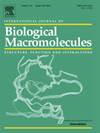
中科院分区:1区
影响因子:7.7
审稿周期:约Time to first decision: 9 days; Review time: 64 days; Submission to acceptance: 82 days; 约2.7个月 约7.8周
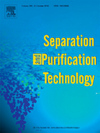
中科院分区:1区
影响因子:8.1
审稿周期:约Time to first decision: 6 days; Review time: 44 days; Submission to acceptance: 54 days; 约4.1个月 约6.8周
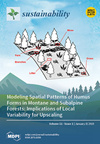
中科院分区:3区
影响因子:3.3
审稿周期:约17.72天 11 Weeks
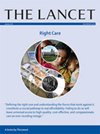
中科院分区:1区
影响因子:98.4
审稿周期: 约3月
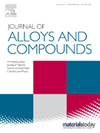
中科院分区:2区
影响因子:5.8
审稿周期: 约2.4个月 约7.6周

中科院分区:2区
影响因子:5.1
审稿周期: 约1.9个月 约2.7周
本站合法持有《出版物经营许可证》,仅销售经国家新闻出版署批准的合法期刊,不是任何杂志官网,不涉及出版事务。本站仅提供有限咨询服务,需要用户自己向出版商投稿且没有绿色通道,是否录用一切以出版商通知为准。提及的第三方名称或商标,其知识产权均属于相应的出版商或期刊,本站与上述机构无从属关系,所有引用均出于解释服务内容的考量,符合商标法规范。本页信息均由法务团队进行把关,若期刊信息有任何问题,请联系在线客服,我们会认真核实处理。 若用户需要出版服务,请联系出版商:MDPI, ST ALBAN-ANLAGE 66, BASEL, SWITZERLAND, CH-4052。